Shopify vs eBay: Which Is Best to Grow Your Ecommerce Business?
9 min
- Mike Glover
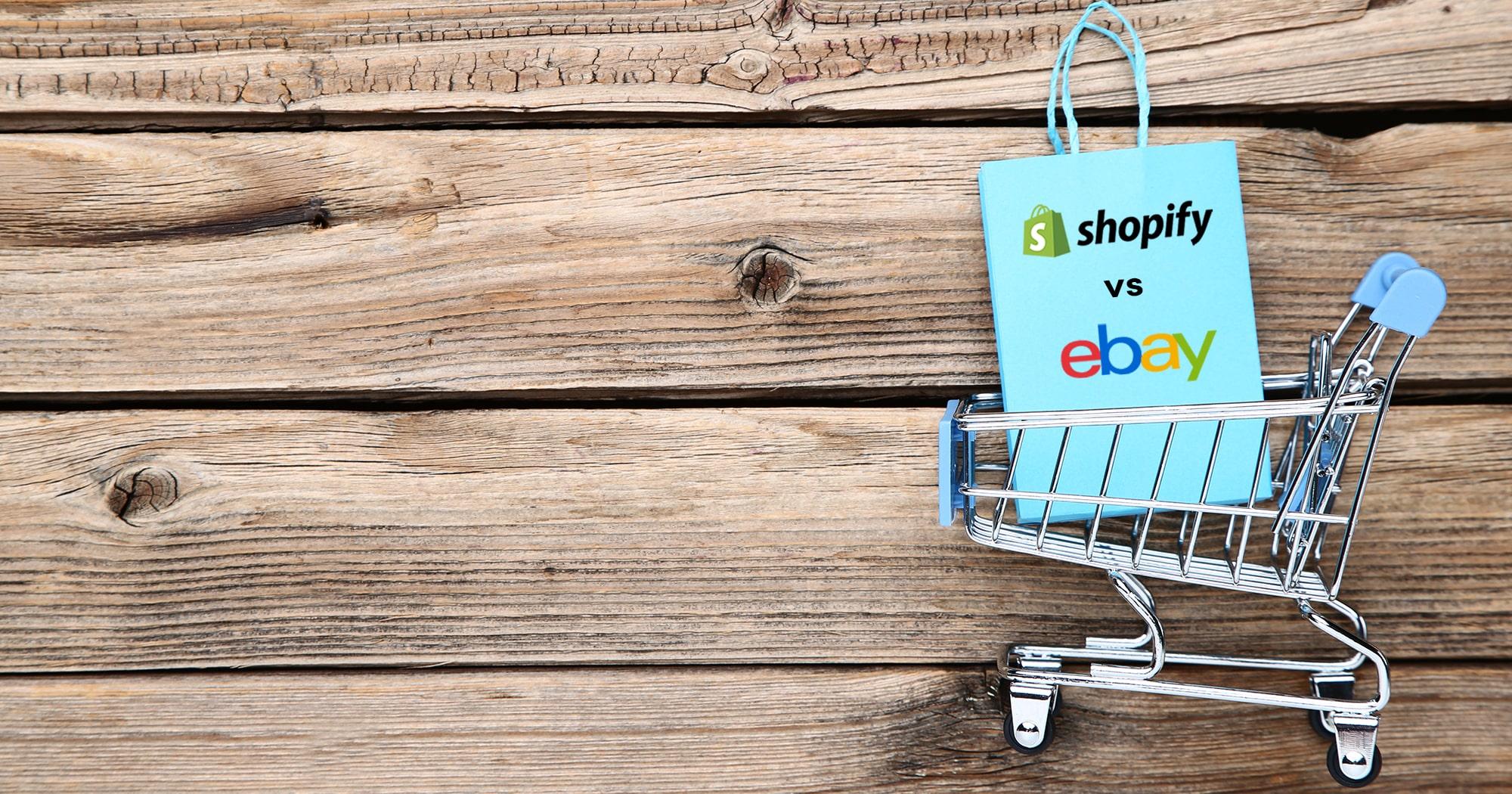
Looking to start selling goods online? You should be.
Ecommerce sales accounted for 23% of global retail sales in 2022 – up from just 7.4% in 2015. And this is set to steadily rise up to a huge 95% by 2040.
But this begs the question:
Where should I actually sell my goods?
And Shopify vs eBay is something that comes up regularly. So in this post, we cover the main differences between the two – and compare to see which suits you best.
Shopify
Shopify is an ecommerce platform that enables businesses to set up their own branded online store and sell physical products. It has comprehensive management and marketing features, and currently powers more than 800,000 stores in around 175 countries.
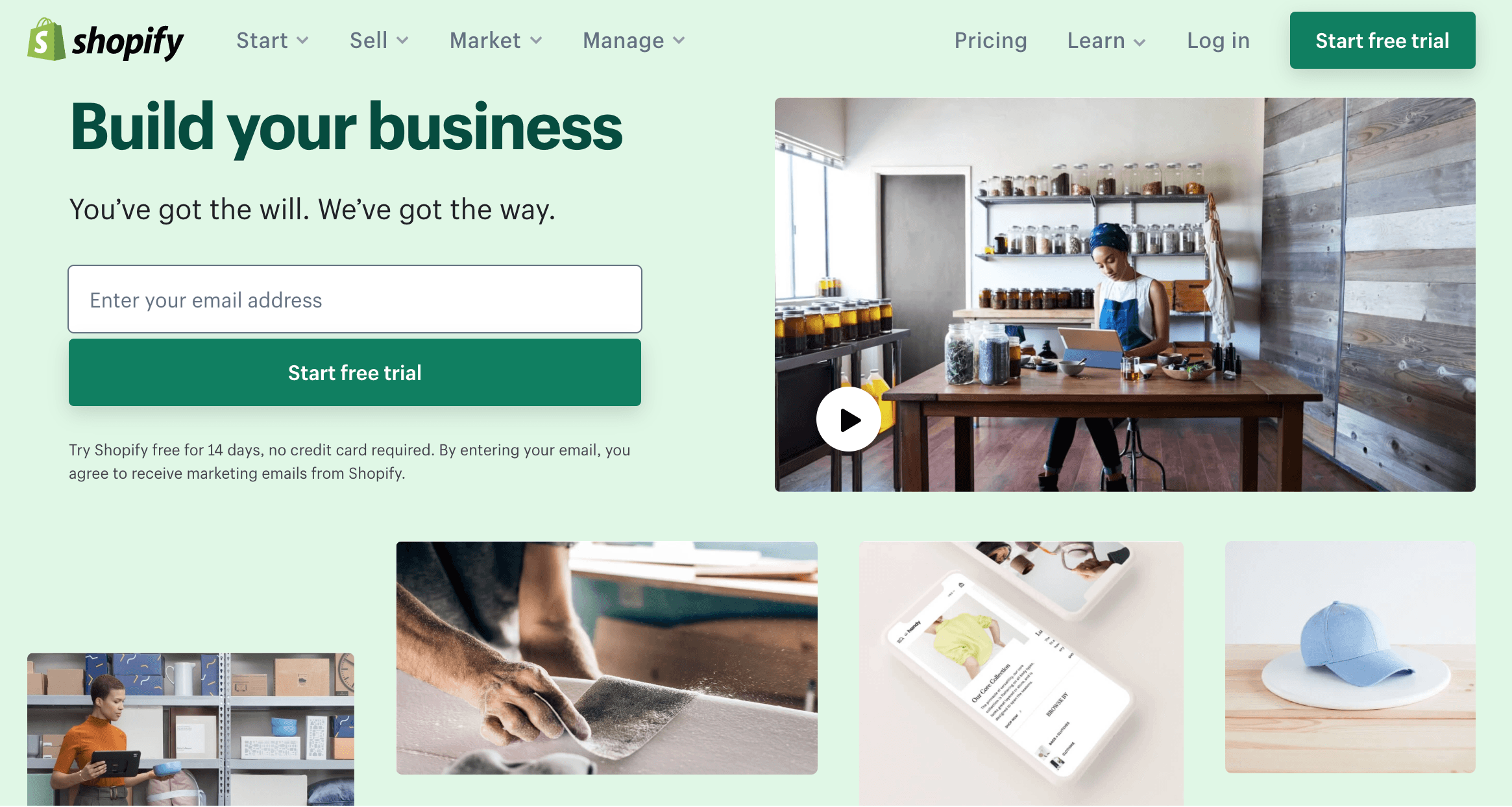
How does Shopify work?
Shopify provides the framework and basic platform allowing people to set up an online store – from budding entrepreneurs, to SMEs. Unlike eBay (which we’ll get to below), Shopify is the digital equivalent of setting up a brick-and-mortar shop.
Shopify is designed to simplify and streamline the process of selling goods online.
It handles a huge amount of the legwork in one place. Things like:
Buying your domain.
Branding.
Creating product pages.
Storing customer data.
Processing payments.
Fulfilling orders.
And a bunch of other features that allows you to have complete control over your online store.
You’ll manage your entire Shopify website via a user-friendly back-end dashboard:
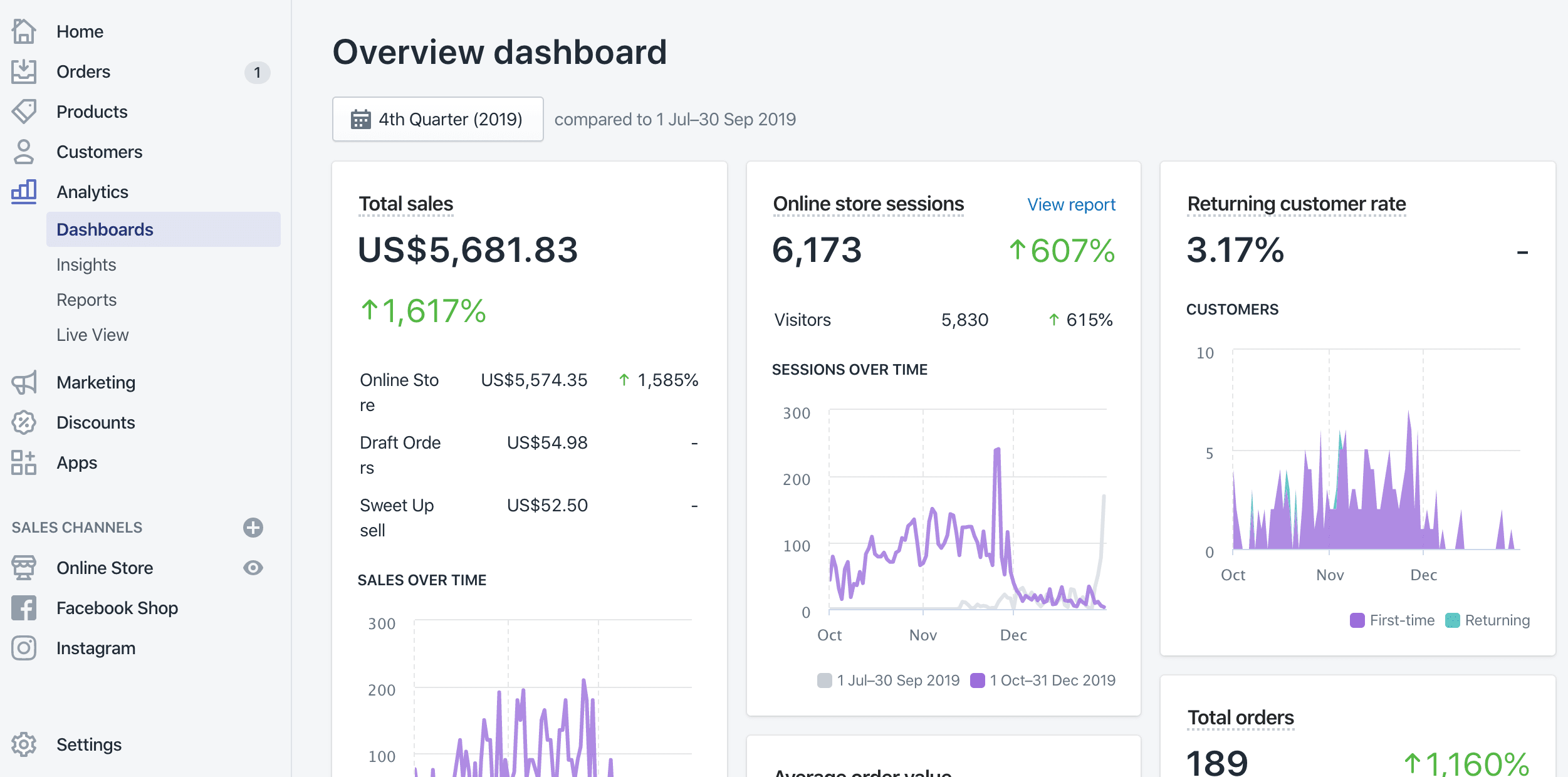
From here, you can manage your current orders, communicate with customers, handle payments, create and edit product pages and study analytics.
This latter aspect is a big benefit. This data covers recent activity, real-time actions, customer behavior, and overall performance of your growing business, with in-depth reports available. Analytics are a fantastic resource for understanding the impact you’re making on customers and the wider market.
Want tight control over how your store looks?
Shopify’s customization options are solid, with a number of themes to choose from in the Theme Store – both free and paid.
Another major benefit of Shopify is that it hosts your store for you. There’s no need to worry about finding an external hosting solution, which can be daunting if you’re new to the world of ecommerce. Technical issues will also be handled on their end, leaving you free to focus on the business itself.
Plus, there’s lots of integrated tools – like Shopify Shipping (which can be beneficial for smaller retailers).
Need a hosting solution? Check out How to Choose the Best Magento Hosting Solution For Your Ecommerce Store!
Shopify also has a killer app store
A whopping 87% of merchants use the Shopify App Store, which can help you get more out of your online venture. Some of these apps are developed by Shopify, while others are third-party products.
For example, you can try:
Shopify Chat (for live chat).
Veeqo (for multichannel inventory management and Shopify shipping software).
Oberlo (for dropshipping).
Klaviyo or Omnisend (for email marketing).
Best Currency Converter (to auto-convert currencies).
Wheelio (for gamifying lead capture with a giveaway spin wheel).
This is just a small selection of the apps available, but it demonstrates an impressive variety – all helping make Shopify a highly-customizable platform.
Ready to scale your business quickly? Try 34 Essential Ecommerce Tools to Accelerate Growth!
Shopify pricing
Shopify offers a 14-day free trial, then has three base price plans:
Basic Shopify: $29 a month. This offers all the basics for starting a new ecommerce business.
Shopify: $79 a month. Everything on Basic, but with more staff accounts, gift cards and enhanced reports, shipping and POS options.
Advanced Shopify: $299 a month. Everything on Shopify, but with even more staff accounts and further enhanced reports, shipping and POS options.
Shopify Plus is an additional option for high-volume merchants. The fees for Shopify Plus vary but are far higher, making it best-suited to enterprises looking for significant scale.
Shopify Lite, on the other hand, lets you sell via Facebook, interact with customers through the Messenger app, take credit card payments, and add products to a website/blog. This is available for just $9 per month.
Shopify pros
Web hosting for your store included.
Easily customizable product and website pages.
Huge range of apps to customize and enhance your store, marketing and operations even further.
Process online payments, then manage and fulfill your orders.
24/7 support means you can receive technical assistance around the clock.
Shopify Experts available to help boost your performance and make the most of the platform (for a fee).
Shopify cons
No free version available beyond the 14-day trial period.
Paid apps can add to the expense of running your store.
You’ll need to drive your own traffic to the store.
Fast-growing businesses will need to upgrade to higher price plans to unlock the functionality and tools they’re likely to need.
Larger businesses may need something more customizable and powerful – like Magento or Shopify Plus.
Who’s Shopify best for?
Shopify is really ideal for two key personas:
Beginners looking to start selling online for the first time.
More established ecommerce business looking for continued growth.
It makes launching your own store quick and simple, while the range of branding options helps you create something unique.
The competitive pricing for the basic package accommodates even the smallest businesses, and Shopify scales nicely, too. So as you grow your store, increase your inventory, and build a wider audience, your store will align well.
But more experienced companies looking to scale up in a big way aren’t likely to get much benefit from Shopify.
Want more Shopify tools? See The Best Shopify Shipping Apps For 2020!
eBay
eBay is an online marketplace where shoppers can buy a wide range of items from businesses or private sellers by either bidding on an auction or choosing to straight up ‘Buy it Now’.
You can set up your own eBay store, but it will always be within the eBay website and is significantly more limited than Shopify when it comes to branding and customization.
However, latest stats show eBay currently has over 135 million users worldwide. Meaning it’s a very active marketplace full of people interested in buying your products.
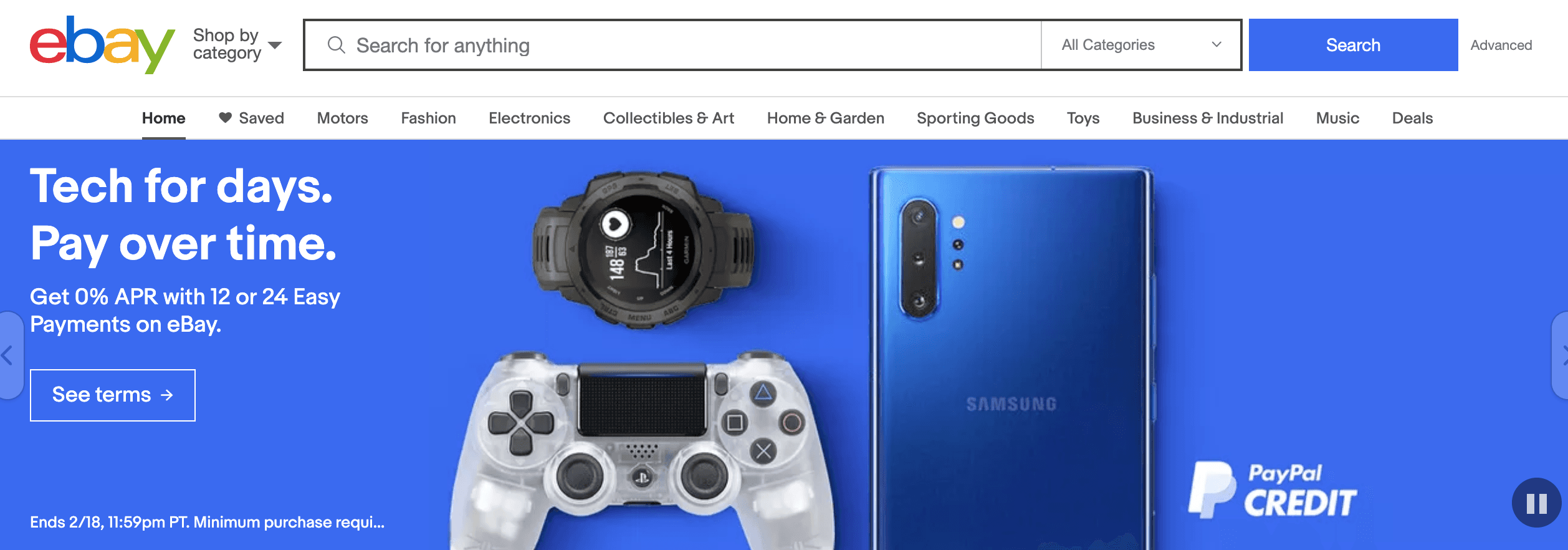
How does eBay work?
Any individual can sporadically sell their old, unwanted items on eBay.
But retailers should set up a business account and create an official eBay Store. This helps to carve your own little niche in the global eBay mega-marketplace.
You can:
Create your own personalized shopfront for reinforced branding and a more bespoke shopping experience.
Tweak the colors, images, navigation bar, header style, shop description, logo, and more.
List all your products, each with its own dedicated page that can appear in eBay search results.
Save on listing fees, compared to not having a Store.
Create business policies – like shipping, returns, etc.
Collect and display reviews on specific products.
Collect and display feedback ratings on you as a seller – helping build trust in your brand within the eBay community.
Process payments, manage orders and print shipping labels.
Get detailed insights into sales performance, traffic, etc.
Lean on eBay for protection from high-risk or unreasonable buyers.
Plus, US users (soon to be all users) can manage everything in the new Seller Hub:
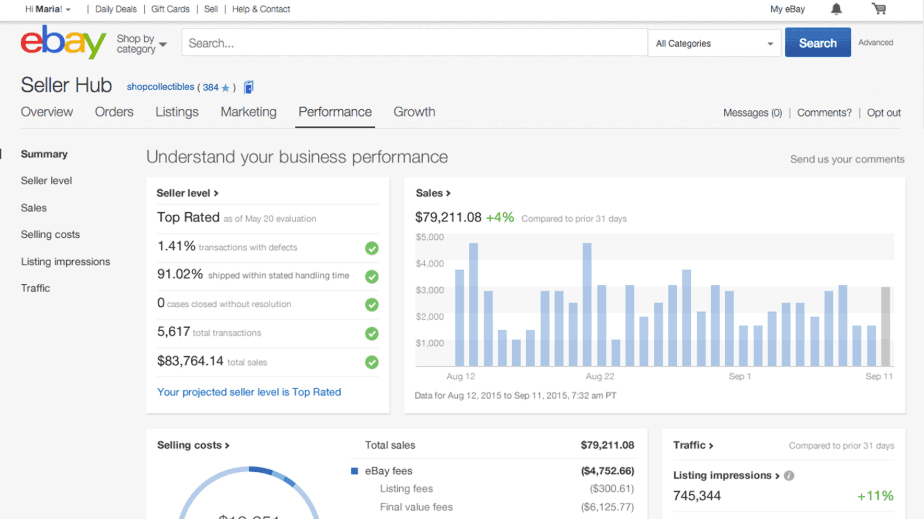
Creating a shopfront with clear branding adds credibility to your account. You’ll show customers you’re treating this as a serious, legitimate enterprise — much more impressive than appearing as a regular seller.
eBay pricing
For regular listings, eBay just takes 10% of the final sale price.
But setting up a Store will mean a slightly more complex pricing situation. The options are:
Starter: $4.95 a month (based on annual plan). For starter sellers who list up to 100 items per month as either an auction or fixed price format.
Basic: $21.95 a month (based on annual plan). For sellers who list at least 250 items per month in a fixed price format, or list high value items to take advantage of lower final value fees.
Premium: $109.95 a month (based on annual plan). For sellers who list at least 1,000 items per month in a fixed price format.
Anchor: $299.95 a month (based on annual plan). For sellers who list at least 10,000 items per month in a fixed price format.
Enterprise: $2,999.95 a month (based on annual plan). For sellers who list at least 100,000 items per month in a fixed price format.
eBay will include a number of listings each month within the price plans, then charge a small fee for any additional listings.
eBay pros
Sell to a global audience of over 180 million.
Easy to get started and manage.
Create a unique shopfront to establish your brand within the eBay marketplace.
Seller protection measures in place.
Good range of pricing packages available.
eBay cons
Highly competitive marketplace with typically very price sensitive shoppers.
Can be difficult to stand out from other Stores and sellers.
Limited customization options and growth tools compared to Shopify.
Who’s eBay best for?
All kinds of businesses can sell on eBay. But there are typically four scenarios it works best for:
Individuals looking to start a ‘side hustle’ or bootstrapped small business.
Businesses looking to test products out before committing to a standalone website.
Established brands that already sell products likely to do well on eBay, and are looking to add another sales channel to their ecommerce operation.
Established brands looking to offload old stock at discounted prices, without diluting the brand reputation on their website.
So eBay can be great for making extra sales. But isn’t on its own the best place to build a stand out store that can be scaled into a long lasting ecommerce brand.
Shopify vs eBay comparison
So, Shopify vs eBay – which is better?
Ultimately, the answer comes down to each individual business.
Creating a store with Shopify achieves a professional look and feel fast – great for growing a genuine brand. You get a standalone website, 24/7 support, access to thousands of apps, and plenty of customization options.
But you’ll need to have a plan for driving targeted traffic to the site in order to generate sales.
eBay offers a store within an already established marketplace of buyers. So traffic can be a lot easier to acquire while maintaining profitable margins.
But your store then lacks brand independence, and is usually forced to heavily compete on price.
Selling on both Shopify and eBay
One solution is to cut the Shopify vs eBay comparisons entirely – and just start selling multichannel on both platforms.
This is where using a multichannel system like Veeqo is almost essential. Helping to:
Sync inventory across every channel in real-time, so you don’t sell more units than you actually have in stock.
Manage and ship orders from one centralized platform, so you don’t need to log in to multiple systems.
Handle returns from start to finish, making it easier to give customers the best experience possible.
You’ll see one view of your entire ecommerce operation – regardless of whether you’re selling on Shopify, eBay or anywhere else:
Final thoughts on Shopify vs eBay
Shopify vs eBay is a question many people get stuck with. And the right call is entirely based on your business, products, and target customer.
If you’re set up for competing on price, then eBay could be a valuable venture. Whereas building a solid, long term online retail brand may be better served with a dedicated website on a platform like Shopify.
But if you go down the multichannel route, Veeqo has your back to manage the back-end operation all the way.





